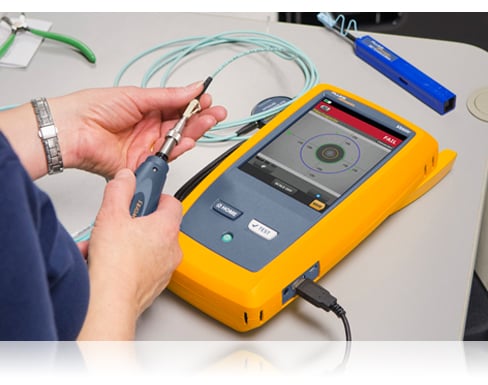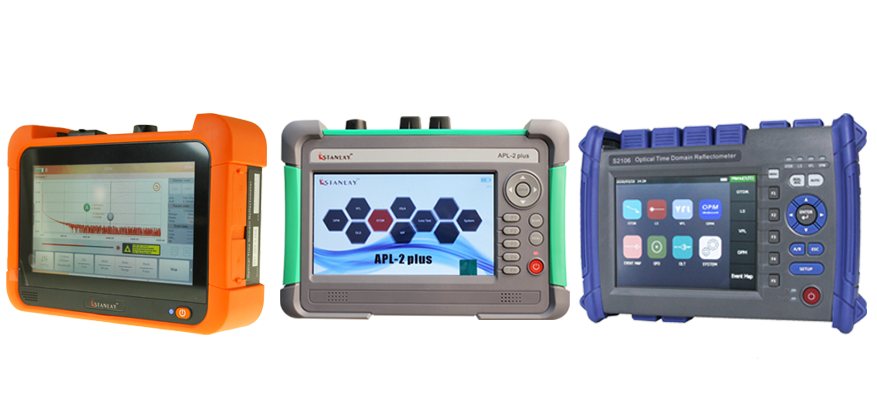The Complete Guide About fibre testing equipment for industrial processes
Discovering Advanced Techniques in Fiber Measurement and Their Industry Effect
In today's textile industry, exact fiber dimension is necessary for optimizing production procedures and meeting sustainability goals. With the rise of innovative imaging and analytical tools, you can gain much deeper insights right into fiber framework and structure. This change not just boosts efficiency yet additionally straightens with industry standards. As these sophisticated techniques evolve, you might ask yourself exactly how they can further change manufacturing methods and impact the future of textiles.
The Importance of Accurate Fiber Measurement in Textile Manufacturing

Ingenious Imaging Technologies for Fiber Evaluation
When it involves fiber evaluation, cutting-edge imaging technologies are game changers. High-resolution microscopy strategies and spectroscopic analysis approaches offer you with thorough understandings into fiber structure and make-up. These improvements not only enhance precision however also simplify your measurement procedures.
High-Resolution Microscopy Techniques
High-resolution microscopy strategies have transformed fiber analysis, permitting researchers to visualize fibers at unprecedented levels of information. With methods like scanning electron microscopy (SEM) and transmission electron microscopy (TEM), you can observe fiber morphology, surface functions, and cross-sections with remarkable clarity. These techniques allow you to compare various fiber types and evaluate their architectural integrity. You'll discover that high-resolution imaging assists identify flaws, incorporations, and other critical qualities that can influence material efficiency. In addition, advancements in digital imaging software have actually boosted picture handling, making it much easier to analyze and analyze information. By taking on these ingenious techniques, you can drive higher precision in fiber dimension and add to innovations in various markets, from textiles to composites.
Spectroscopic Evaluation Methods
Spectroscopic analysis approaches have actually become powerful devices for fiber characterization, providing understandings that complement high-resolution microscopy. You can use techniques like infrared (IR) spectroscopy, which helps recognize the chemical make-up of fibers by gauging molecular resonances. Raman spectroscopy uses one more layer of detail, permitting you to evaluate molecular structures with spreading of monochromatic light. These techniques not just boost your understanding of fiber residential properties but likewise allow the detection of pollutants and architectural variations. By incorporating spectroscopic methods with conventional microscopy, you get a more extensive view of fibers' physical and chemical characteristics, increasing your research accuracy. Ultimately, these technologies can notably affect material choice and top quality control in various markets.
Advanced Analytical Tools and Their Applications
As you discover the domain of fiber dimension, you'll discover that innovative analytical tools play an important role in boosting accuracy and performance. Strategies like high-performance fluid chromatography (HPLC) and gas chromatography (GC) enable you to analyze fiber structure with impressive precision. These tools allow you to identify details elements and contaminants, making certain top quality control in your products.Additionally, making use of scanning electron microscopy (SEM) provides you an in-depth sight of fiber structure, helping you understand exactly how various therapies influence performance. Modern software program also streamlines information analysis, making it easier to analyze intricate outcomes and collaborate across groups.

Impact of Fiber Measurement on Manufacturing Efficiency
While precise fiber dimension may appear like a tiny information, it considerably influences production efficiency in the textile sector. When you purchase accurate fiber dimension techniques, you can maximize resources use and decrease waste. This causes far better resource allocation, enabling you to produce premium materials without overusing resources.By understanding fiber attributes, you can tailor production procedures to details products, boosting your process and decreasing downtime. Recognizing the precise tensile stamina of fibers allows you readjust equipment setups for optimum efficiency. This not only speeds up production but also guarantees regular item quality.Moreover, accurate fiber measurement assists you recognize issues early in the assembly line, avoiding expensive reworks and hold-ups (fibre testing equipment). Generally, carrying out sophisticated fiber dimension techniques improves operations, boosts performance, and inevitably raises earnings. In today's competitive market, every detail counts, and specific fiber dimension is a game-changer
Sustainability Considerations in Fiber Assessment Techniques
When you assess fiber, it's vital to consider sustainable techniques that can lessen environmental impact. Making use of environment-friendly dimension techniques and lowering waste in your assessments can significantly enhance your overall sustainability. Additionally, incorporating lifecycle evaluation right into your methods can offer this article a more clear photo of your fiber's environmental impact.
Eco-Friendly Measurement Methods
Considering the expanding demand for sustainability in numerous markets, adopting green measurement approaches for fiber evaluation has actually ended up being important. You can begin by utilizing safe solvents and biodegradable products in your testing procedures. These alternatives not only lower ecological link impact yet likewise boost safety for your group. Implementing electronic measurement strategies can even more lessen waste, as they often call for less physical samples and sources. Additionally, leveraging ingenious modern technologies like near-infrared spectroscopy can yield precise outcomes without harmful chemicals. By picking these greener approaches, you add to a much more lasting future while maintaining high standards in fiber high quality. Inevitably, integrating environmentally friendly techniques right into your fiber assessment not only lines up with customer worths yet also increases your brand's track record.
Lowering Waste in Assessment
To efficiently minimize waste in fiber evaluation, you can apply approaches that streamline your testing processes and reduce resource usage. Begin by enhancing sample sizes; utilizing smaller samples can produce precise outcomes while preserving products. Next off, buy multifunctional devices that enables different tests without needing multiple tools, reducing energy and source usage. You need to additionally take into consideration taking on electronic tools for data collection and analysis, which can reduce paper waste and improve efficiency. Frequently training your group on lasting techniques assures everybody's on board with waste reduction objectives. Ultimately, teaming up with vendors who focus on sustainability can additionally boost your efforts, permitting you to evaluate fibers while keeping a dedication to environmental responsibility.
Lifecycle Evaluation Combination
Integrating lifecycle evaluation (LCA) into fiber evaluation techniques can considerably enhance sustainability efforts. By checking out the environmental influences of fibers from production to disposal, you can determine locations for improvement. This technique aids you comprehend source consumption, energy usage, and waste generation throughout the fiber's life.When you include LCA, you're not just determining fiber features; you're also thinking about like this the eco-friendly footprint. This holistic view allows you to make enlightened decisions that prioritize sustainability. You may pick fibers that call for fewer resources or have a lower carbon effect. Inevitably, LCA empowers you to optimize processes, minimize waste, and advertise eco-friendly choices in fiber manufacturing, straightening your experiment international sustainability goals.
Industry Criteria and Laws Shaping Fiber Measurement
As the demand for high-grade fiber items expands, recognizing the sector standards and regulations that govern fiber measurement becomes necessary. These standards assure uniformity, precision, and safety and security in the dimension procedure, which ultimately impacts product quality. Organizations like ASTM International and ISO set forth standards that manufacturers must comply with, covering different elements such as fiber identification, strength screening, and dampness material evaluation.

Future Fads in Fiber Measurement and Textile Production
Just how will improvements in innovation improve fiber dimension and fabric manufacturing? You'll see a change towards automation and real-time data analysis, improving accuracy and performance. Smart sensors will keep track of fiber homes continually, enabling prompt modifications in production. This indicates you can expect better fabrics with much less waste.Moreover, AI and artificial intelligence will forecast trends in consumer choices, enabling producers to adjust promptly. fiber measurement. By integrating blockchain innovation, you'll have far better traceability of materials, guaranteeing sustainability and honest sourcing.Virtual fact and increased fact will certainly contribute as well, supplying immersive training experiences for employees on fiber handling and production processes.As you embrace these adjustments, the fabric industry will transform into a much more responsive, sustainable, and ingenious field, establishing brand-new standards for quality and performance. The future of fiber measurement and textile manufacturing is bright, and it's time to jump on board
Often Asked Concerns
What Are the A Lot Of Typical Fiber Kind Measured in the Market?
In the market, you'll usually encounter natural fibers like cotton and wool, in addition to artificial choices such as polyester and nylon. Each type has distinct residential properties, influencing their dimension and application in different items.
Just How Do Fiber Dimensions Impact Consumer Item Top Quality?
Fiber dimensions straight affect customer product quality by guaranteeing consistency, resilience, and efficiency. When you understand these metrics, you can make informed selections, bring about improved contentment and much better overall experiences with the items you use.
What Training Is Needed for Fiber Dimension Technicians?
To become a fiber dimension service technician, you'll need specialized training in fabric science, measurement strategies, and equipment procedure. Hands-on experience and certifications can boost your abilities, making you competent in exact fiber analysis and quality control.
Are There Any Kind Of Certifications for Fiber Dimension Professionals?
Yes, there are accreditations for fiber dimension experts. You can pursue choices like the Certified Optical Fiber Specialist (CFOT) or various industry-specific credentials that boost your experience and integrity in fiber measurement and screening.
How Can Small Companies Implement Fiber Dimension Techniques Successfully?
You can implement fiber measurement methods effectively by purchasing cost effective tools, educating your group, and establishing clear procedures. Collaborate with market specialists and continuously fine-tune your procedures to boost accuracy and effectiveness over time.